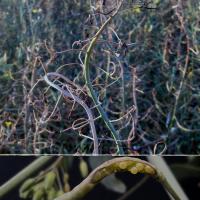| Phenoxy acid | Pyridines | Benzoic acids | |||
|---|---|---|---|---|---|
| Chemical name | Example trade name | Chemical name | Example trade name | Chemical name | Example trade name |
| 2,4-D amine | Amicide Advance® | Clopyralid | Lontrel® | Dicamba | Banvel® |
| 2,4-D ester | Estercide Xtra 680® | Triclopyr | Garlon® | ||
| MCPA ester | LVE MCPA® | Fluroxypyr | Starane® | ||
| MCPB | MCPB® | Picloram | Tordon® Grazon® | ||
| 2,4-DB | 2,4-DB®, Buttress® | ||||








